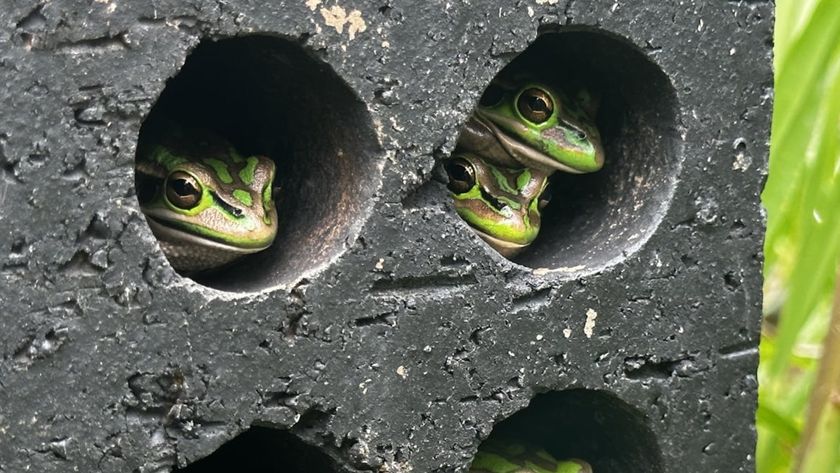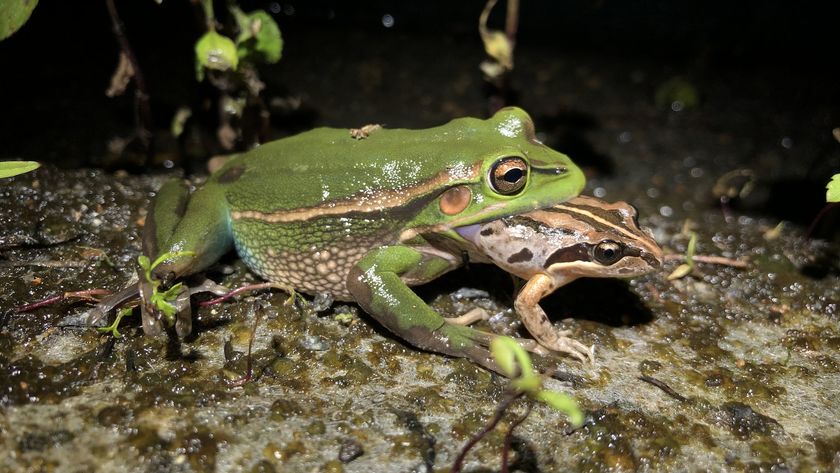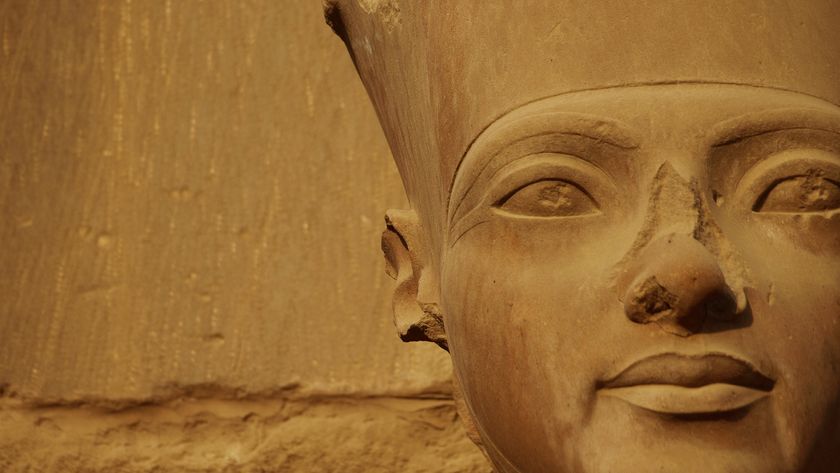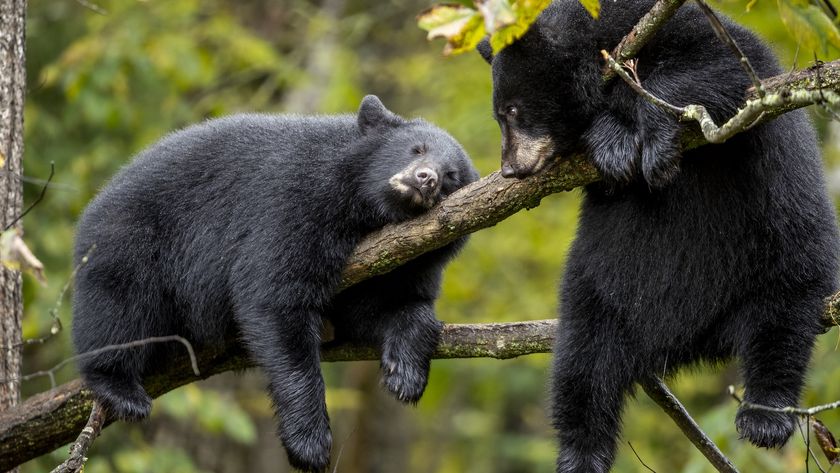Poison dart frogs: Facts about the beautiful but deadly amphibians
They might look cute, but the toxins from a poison dart frog can be strong enough to kill several humans.
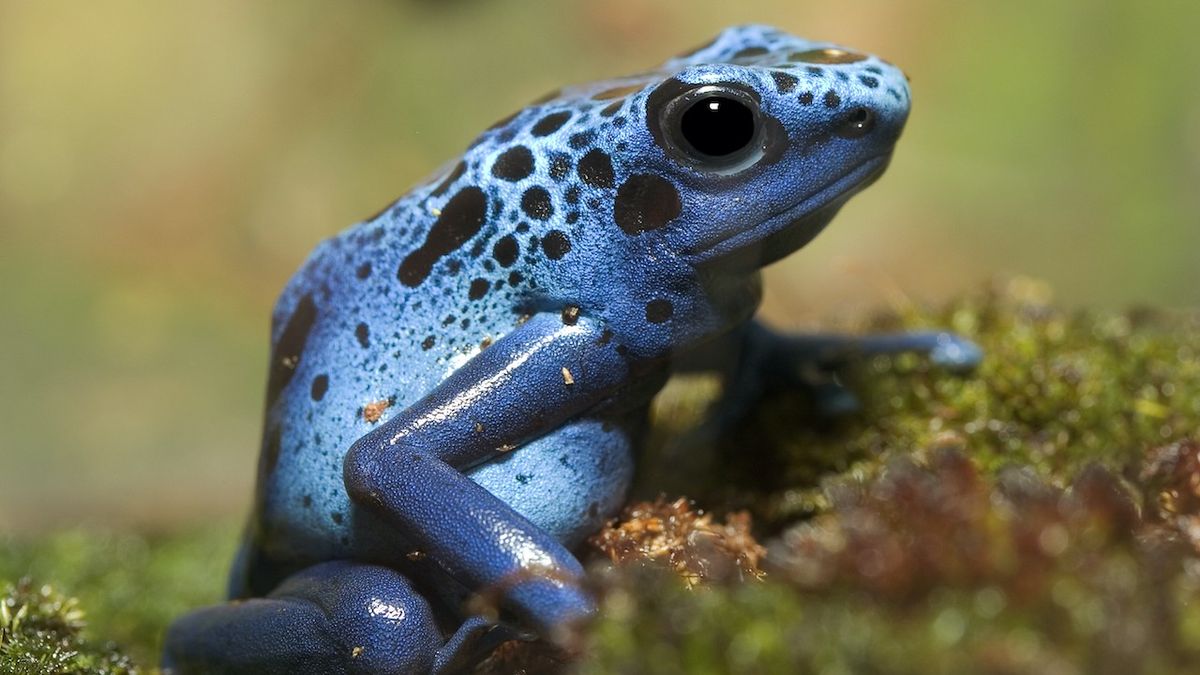
Poison dart frogs are small, brightly colored amphibians that live on tropical rainforest floors across Central and South America. They are members of the family Dendrobatidae, and there are more than 175 known species, according to San Francisco Zoo. Poison dart frogs are tiny, measuring just 1 to 2 inches (2.5 to 5 centimeters) long, and unlike many other amphibians they are diurnal, meaning they are active in the daytime, according to the Rainforest Alliance.
Poison dart frogs are named for the toxins they secrete from their skin, which have traditionally been used to tips of hunters' weapons. For example, the Emberá and Noanamá Indigenous people in western Colombia have used the skin of golden poison frogs (Phyllobates terribilis) to tip blowgun darts for hundreds of years, according to the American Museum of Natural History.
Kingdom: Animalia
Phylum: Chordata
Class: Amphibia
Family: Dendrobatidae
Poison dart frogs come in a range of vivid colors, and so they are sometimes known as the "jewels of the rainforest." Their vibrant coloring warns predators that the frogs are poisonous and should be avoided. This survival mechanism is called aposematism. Some species of poison dart frogs also use their colors and patterns as camouflage. For example, dyeing dart frogs (Dendrobates tinctorius) use their bright-yellow and black patterns to blend in with their natural habitat when viewed from a distance, according to research published in 2018 the journal Proceedings of the National Academy of Sciences (PNAS).
Related: Adorable 'chocolate frog' discovered in crocodile-infested swamp
The huge variety of colors among poison dart frog species may be a result of the frogs’ ancestors becoming separated around 10,000 years ago, when what is now Panama flooded, isolating the frogs in different locations. The various frog populations then evolved their own colorization, according to the Smithsonian Institute.
How poisonous are poison dart frogs?
Poison dart frogs’ toxicity differs between species. The most toxic species of poison dart frogs belong to the genus Phyllobates. These frogs secrete a potent toxin called batrachotoxin, according to the Encyclopedia of Toxicology. Golden dart frogs are considered one of the most toxic animals on Earth, according to National Geographic.
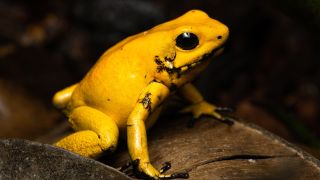
Batrachotoxin is a powerful steroidal alkaloid that interferes with the body’s nervous system. The brain sends instructive electrical messages to different parts of the body that pass through sodium channels. Batrachotoxins keep these channels open and disrupt the brain's messaging system, causing several debilitating and potentially fatal conditions, such as paralysis, extreme pain and even cardiac failure.
There is, however, one animal that can withstand the poisonous powers of golden dart frogs: fire-bellied snakes (Liophis epinephelus). These snakes are the only known natural predators of dart frogs because they are immune to the frogs’ toxins, according to the Animal Diversity Web.
Poison dart frogs have also developed techniques to avoid poisoning themselves. A study published in the Journal of General Physiology proposed that poison dart frogs have "toxin sponge" molecules that prevent the batrachotoxin from binding with sites on the frogs’ own cells, providing them with immunity to their own poison.
Related: Why don't poisonous animals die from their own toxins?
What do poison dart frogs eat?
As tadpoles (the stage before the animals reach adulthood), their diet consists of whatever is available to them, such as algae, dead insects and in some cases other tadpoles. Adult poison dart frogs are omnivores, but they predominantly feast on insects such as ants, termites and beetles, according to the San Diego Zoo Wildlife Alliance.
Poison dart frogs obtain their toxicity through their diet. Although it remains largely unknown which insects are responsible for giving these frogs their poisonous powers, a study published in the journal PNAS proposed that melyrid beetles (genus Choresine) might be the culprits.
Related: Photos: The poisonous creatures of the North American deserts
These beetles contain high levels of batrachotoxin and have been found in the bellies of pitohui birds — which produce the same secreted poison as poison dart frogs. "The family Melyridae is cosmopolitan, and relatives in Colombian rainforests of South America could be the source of the batrachotoxins found in the highly toxic Phyllobates frogs of that region," the study researchers wrote.
Wild poison dart frogs that are put into captivity lose the majority of their toxicity, whereas frogs born and raised in captivity don't develop the toxins at all. This is due to the difference between a wild and captive diet, according to the San Diego Zoo Wildlife Alliance.
What is the life cycle of a poison dart frog?
Mating occurs throughout the year but particularly during the rainy seasons, at a site on the forest floor chosen by the male. To mate, the female deposits the unfertilized eggs on leaf-litter in a dark and moist environment, and the male releases his sperm onto the eggs to fertilize them. A frog's clutch can vary in size, but some species produce as many as 40 eggs at a time, according to the Smithsonian's National Zoo & Conservation Biology Institute.
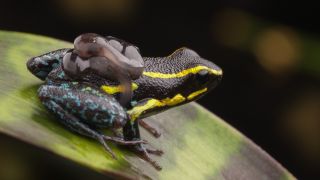
The parent frogs guard their unborn offspring for between 10 and 18 days, occasionally watering them with their urine. The eggs hatch into tadpoles, which latch onto their mother's back, and she then carries them to a pool of water. The pool becomes a nursery for the tadpoles for the next few months, until they undergo metamorphosis and become adult frogs, according to the Smithsonian.
A study published in the journal Symbiosis suggests that bromeliad plants also benefit from having tadpoles between their leaves. Researchers proposed that the plants benefit from absorbing the nitrogen that is produced from the tadpoles feces and which acts as a fertilizer.
Adult poison dart frogs vary in size between species and can range between 0.75 and 1.5 inches (20 to 40 millimeters) in length, according to the Smithsonian. Females tend to be larger than males, and males can also be distinguished from females by their larger front toe pads in some species — such as blue poison dart frogs (Dendrobates azureus) according to Peoria Zoo in Illinois.
The age these amphibians reach sexual maturity also differs between species. For example, strawberry poison dart frogs (Oophaga pumilio) reach maturity after ten months of adulthood, according to the Animal Diversity Web, whereas blue poison dart frogs take two years before they’re ready to mate, according to Toronto Zoo. The average lifespan of a poison dart frog is between three and 15 years, according to National Geographic.
Additional resources
Sign up for the Live Science daily newsletter now
Get the world’s most fascinating discoveries delivered straight to your inbox.

Scott is a staff writer for How It Works magazine and has previously written for other science and knowledge outlets, including BBC Wildlife magazine, World of Animals magazine, Space.com and All About History magazine. Scott has a masters in science and environmental journalism and a bachelor's degree in conservation biology degree from the University of Lincoln in the U.K. During his academic and professional career, Scott has participated in several animal conservation projects, including English bird surveys, wolf monitoring in Germany and leopard tracking in South Africa.
